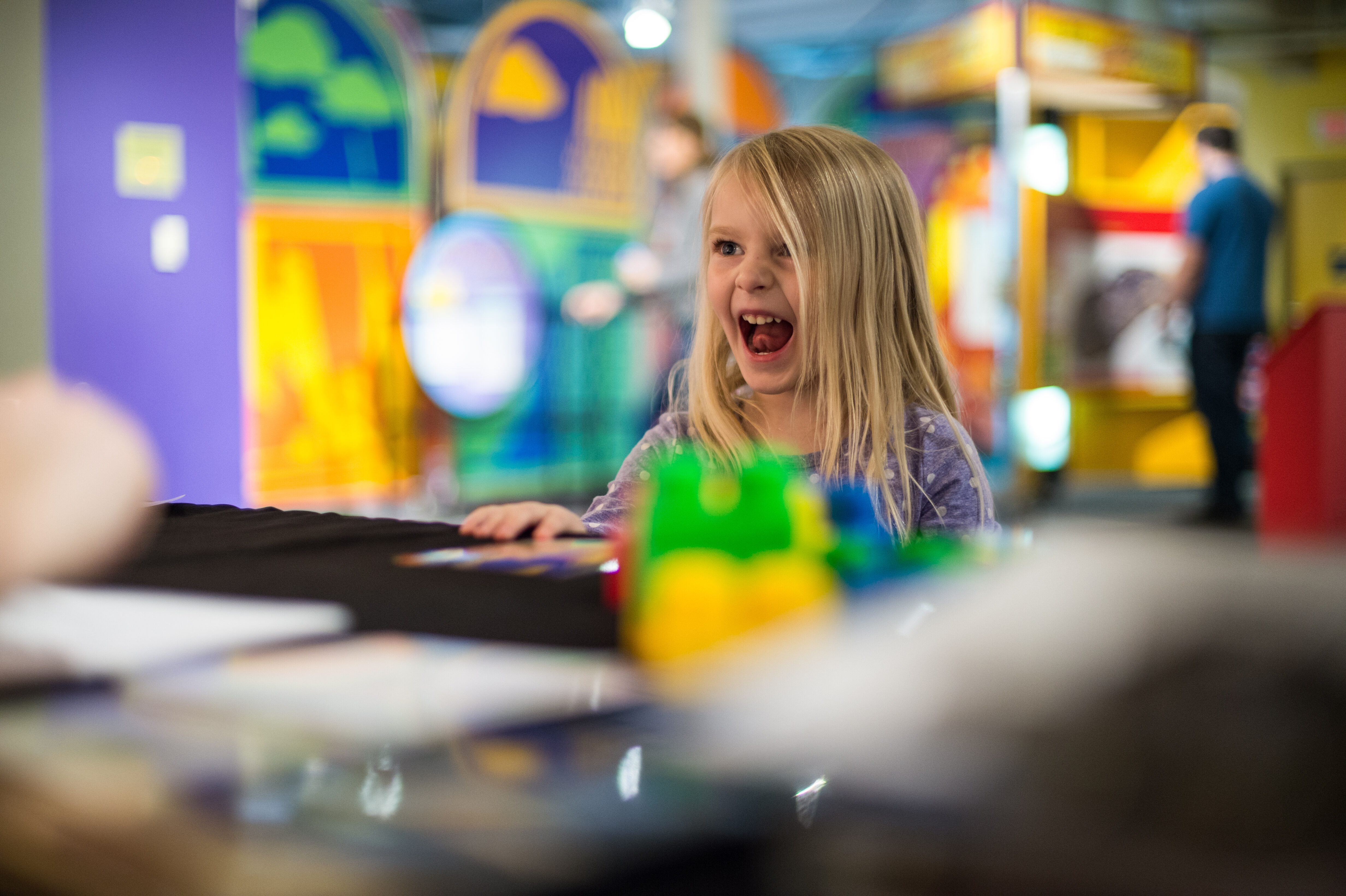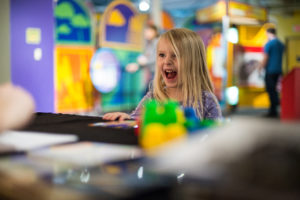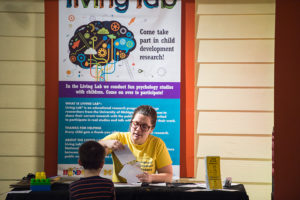
Natalee Hill gets excited answering the study questions at the Ann Arbor Hands-On Museum. Images credit: Austin Thomas, Michigan Photography
During a recent visit to the Ann Arbor Hands-On Museum, Liz Hill and her daughter found themselves unexpectedly participating in a University of Michigan child development research study.
Liz watched intently as her daughter Natalee looked at pictures and answered the researcher’s questions.

Natalee Hill gets excited answering the study questions at the Ann Arbor Hands-On Museum. Images credit: Austin Thomas, Michigan Photography
“You always wonder how much they know,” Liz says of her daughter.
When the study concludes, Natalee picks out her thank you toy from a plastic box, and lab manager Merranda McLaughlin explains the study and answers questions for Liz.
The Living Lab is a program in which U-M faculty bring research projects to public spaces so that parents and children can partake in real child development experiments. Currently, Living Lab hosts studies during the week and on weekends at the Ann Arbor Hands-On Museum, the U-M Natural History Museum and the downtown branch of the Ann Arbor District Library.
The idea behind the Living Lab is that science in public spaces benefits everyone, said Craig Smith, Living Lab program director. Young museum and library-goers provide the Living Lab researchers onsite with a steady stream of subjects for child development research—there have been more than 6,000 participants in Living Lab-based studies since 2012.
Children and their parents who participate in the experiments or observe can learn about science and see how scientists conduct research.
“One of the things we want to do is to conduct great child development research, but we also want to share what we learn with people who are helping us learn it,” Smith said.

Merranda McLaughlin, lab manager, shows Dallin Loosli a photo. His answers give researchers insight into how young children think abstractly and use categories.
Some recent Living Lab studies include: how children think about the acceptability of revenge, how they think about the fair allocation of valued objects, and how they view racial categories.
The experiments are short. Researchers can learn a lot about children’s development by showing a few minutes worth of pictures and asking simple questions.
Living Lab will host a free, public symposium 10 a.m.-3 p.m. Saturday, March 19, to educate parents, students and faculty about the results of recent studies and about the Living Lab model. It will be held at 4448 East Hall, located at 530 Church St. in Ann Arbor. Speakers include U-M researchers discussing findings, local museum partner, and national Living Lab Initiative partners.


